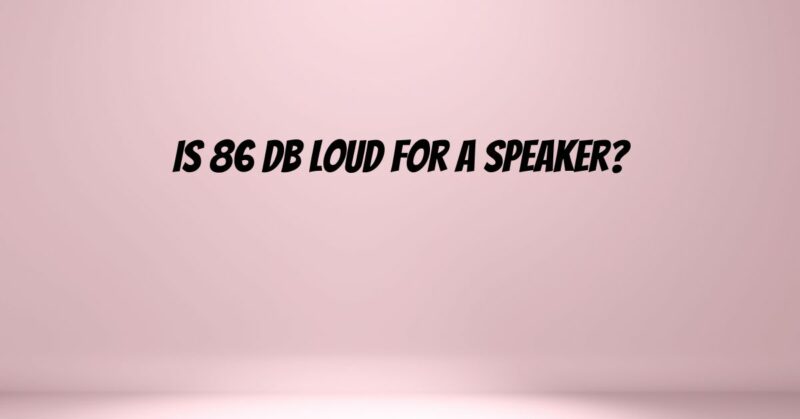When discussing the loudness of speakers, the measurement unit used is decibels (dB). An essential aspect of enjoying music and audio through speakers is understanding what different dB levels represent in terms of sound intensity. In this article, we’ll explore whether 86 dB is considered loud for a speaker and provide context to help you understand the significance of this measurement.
Understanding Decibels (dB):
Decibels are a logarithmic unit of measurement used to quantify sound intensity or loudness. The dB scale is used to compare sound levels, with each 10 dB increase representing a tenfold increase in sound intensity. For example, a sound at 70 dB is ten times more intense than a sound at 60 dB.
Is 86 dB Loud for a Speaker?
A speaker producing a sound level of 86 dB is considered moderately loud in a typical listening context. To provide some perspective:
- Normal conversation: Approximately 60-70 dB
- Typical home audio listening: Around 75-85 dB
- A live concert: Can range from 100 dB to over 120 dB, depending on the venue and proximity to the speakers
Therefore, 86 dB falls within the range of sound levels commonly experienced during home audio listening sessions. It’s important to note that perceived loudness can vary based on factors like room acoustics, speaker quality, and individual sensitivity to sound.
Factors Influencing Perceived Loudness:
Several factors influence how loud 86 dB will sound to you:
- Room Acoustics: The characteristics of your listening environment, such as the presence of sound-absorbing materials or reflective surfaces, can affect the way sound is perceived. Rooms with poor acoustics may require higher volume levels to achieve the desired loudness.
- Speaker Quality: The quality of your speakers plays a significant role in sound reproduction. High-quality speakers can provide better clarity and fullness of sound at lower volume levels, making them sound louder than lower-quality speakers at the same dB level.
- Speaker Sensitivity: Speaker sensitivity, measured in dB, indicates how efficiently a speaker converts electrical power into sound. More sensitive speakers can produce higher volume levels with less amplifier power.
- Listener Sensitivity: Individual sensitivity to sound varies. Some people may perceive 86 dB as comfortably loud, while others may find it too loud for extended listening.
Protecting Your Hearing:
While 86 dB is not excessively loud, it’s essential to be mindful of prolonged exposure to sound at this level, as extended exposure to higher sound levels can potentially lead to hearing damage. To safeguard your hearing health:
- Consider using volume-limiting features on your audio devices.
- Take breaks during extended listening sessions.
- Follow the “60/60” guideline: Listen at 60% of the maximum volume for no more than 60 minutes at a time.
- Use hearing protection in noisy environments or during live concerts where sound levels can exceed 86 dB.
Conclusion:
In conclusion, 86 dB is moderately loud for a speaker and falls within the range of typical home audio listening levels. However, the perceived loudness can vary based on room acoustics, speaker quality, and individual sensitivity to sound. It’s crucial to enjoy music and audio responsibly, taking steps to protect your hearing health when exposed to sound levels that can potentially cause harm.


